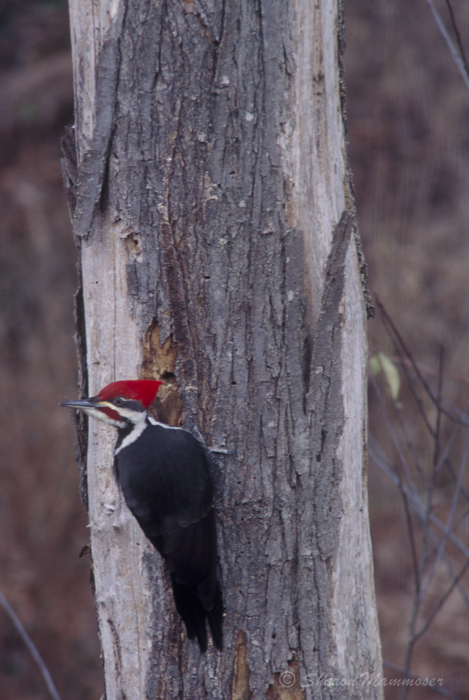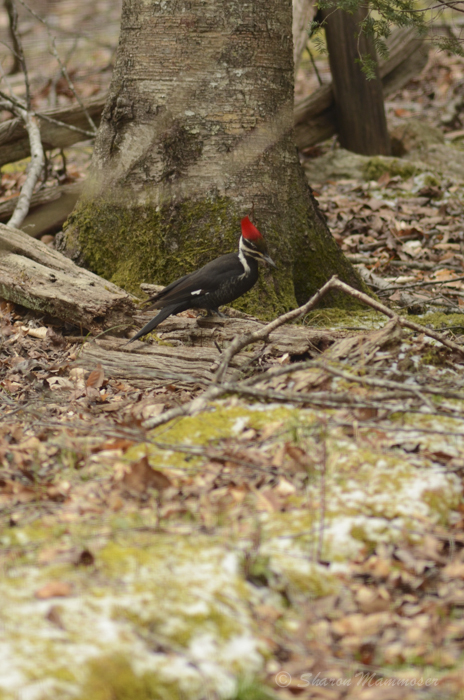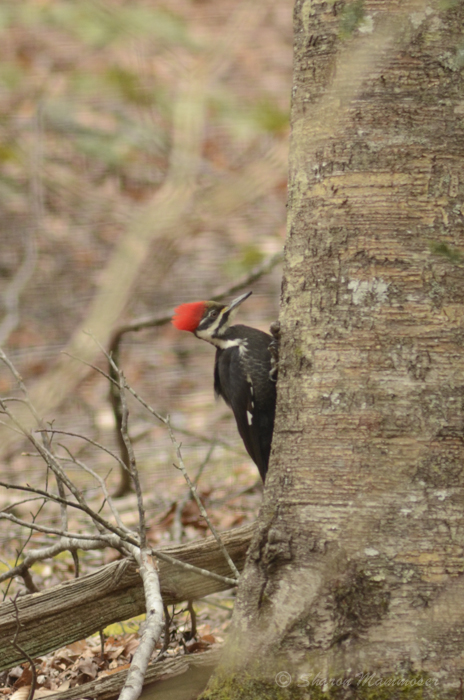 To be fair, if you know anything at all about woodpeckers, you may know that numerous species could be the answer to the above question. But for this week’s Creature Feature, let’s talk about the Pileated Woodpecker, North America’s largest common woodpecker.
To be fair, if you know anything at all about woodpeckers, you may know that numerous species could be the answer to the above question. But for this week’s Creature Feature, let’s talk about the Pileated Woodpecker, North America’s largest common woodpecker.
First off we must discuss the pronunciation of this bird because it seems like there are multiple ways to say it. The dictionary gives the pronunciation as PIE-lee-ay-tid and this is what seems to be most common among birders. But many pronounce it PILL-ee-ate-ed. Like other common names, perhaps where you are from influences how you choose to pronounce it and neither is really wrong.
Here are some other interesting things about the Pileated Woodpecker:
1. The Pileated Woodpecker is a large bird, nearly the size of a crow! From tip to tip it can be 15-19.5 inches long with a wingspan of 26-29.5 inches.
2. It is a striking bird, hard to misidentify with its black body, white stripes along its throat and very noticeable flaming red crest. Males have a red “mustache” whereas females have a black mustache. Look at the pictures here: the top photo is a male and the bottom photo is of a female. Notice the color of the “mustache.”
3. This bird, like other woodpeckers, has two toes forward and two toes pointing backwards, in what is called a zygodactyl arrangement. This helps the woodpecker hold onto the face of a tree when it is looking for insects. Other birds have three toes forward and one pointed backwards.
 4. Pileated woodpeckers as well as some other kinds have a long barbed tongue that they use to spear and extract wood boring beetle larvae and other insects from inside or under tree bark.
4. Pileated woodpeckers as well as some other kinds have a long barbed tongue that they use to spear and extract wood boring beetle larvae and other insects from inside or under tree bark.
5. Pileated woodpeckers are omnivores but their main diet consists of carpenter ants. In addition to ants –sometimes more than 60%!–they will eat other insects and insect larvae, invertebrates and a variety of fruits, nuts and berries. You can sometimes see them hopping around on the ground, especially around fallen trees or branches.
6. Pileated Woodpeckers are monogamous and stay active all year. Unlike many other birds, they do not migrate, but remain in their territory year-round.
7. Pileated Woodpeckers are known for excavating large, rectangular holes in dead trees. It is the male who creates this nesting cavity, though the female helps towards the end. It might take 3-6 weeks to excavate their nesting hole and they find a new spot each spring. Unlike other woodpeckers, the entrance hole for the Pileated Woodpecker is oblong rather than circular. They do not put any lining in the nest except maybe a handful of wood chips from the excavation.
 8. Like other woodpeckers, they have air pockets in their skull to serve as a kind of shock-absorber for their repetitive pounding on trees.
8. Like other woodpeckers, they have air pockets in their skull to serve as a kind of shock-absorber for their repetitive pounding on trees.
9. The holes that they create, both for nesting and when foraging for insects are super important and are used by many other animals. Some of these include chimney swifts, wrens, bluebirds, ducks, bats and even pine martens. Many of these animals depend on woodpeckers’ holes and are an important reason for keeping dead trees standing.
10. Their nesting cavity is 15-80 feet from the ground. Females lay 3-5 white eggs. Both the male and female will spend time incubating and feeding the young. The young birds leave the nest after 18 days but may remain with the adults for 2-3 months before venturing out on their own.

